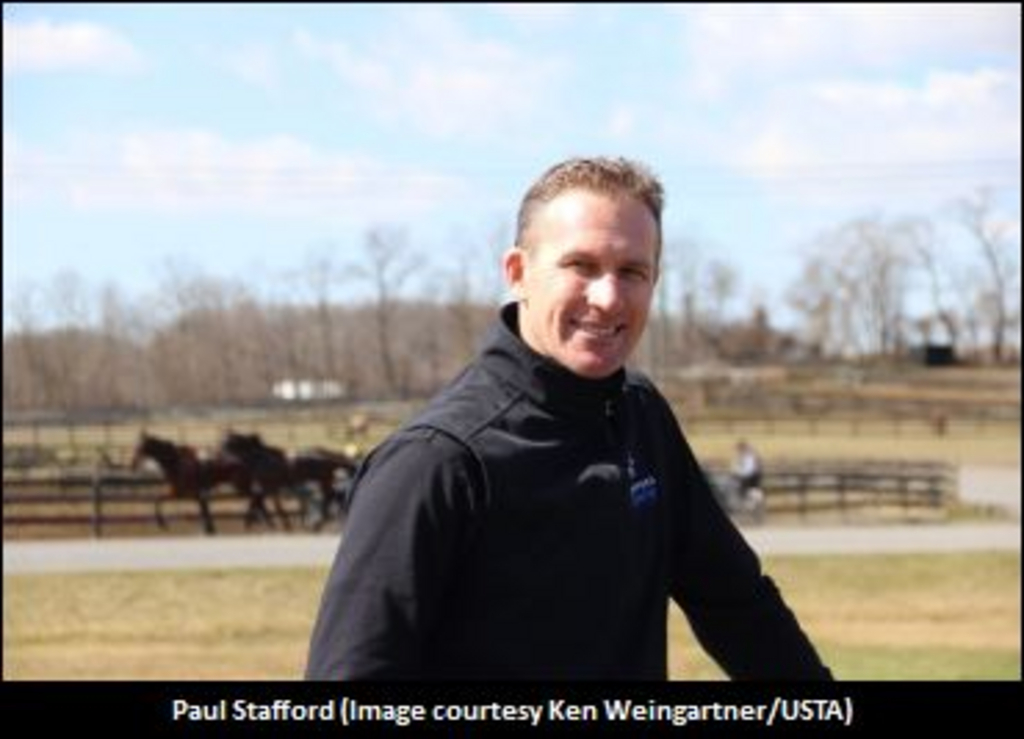
Paul Stafford always believed it was only a matter of time before he operated his own training stable. He just didn’t know how much time it would take before it happened. But after 15 years as an assistant for barns in the Midwest and east, he seized his chance in August 2018 and couldn’t be happier.
Stafford, a 39-year-old San Francisco native, trains 27 horses for owner Tom Ceraso Jr. at central New Jersey’s Gaitway Farm. In his first full season, Stafford’s trainees won 71 races and $1.22 million in purses. His stable’s earnings, accrued mostly at Yonkers Raceway, fell just outside the top 50 for trainers in North America.
Prior to accepting Ceraso’s offer to train his horses, Stafford spent eight years at Gaitway working as a second trainer for, first, Tony Alagna and then Julie Miller.
“I didn’t foresee it taking me 15 years to have my own barn, but I wouldn’t take the 15 years away because of all the things I learned along the way,” Stafford said. “I’ve had the luxury of working for some good stables and I learned a lot of different things from different trainers.
“There was a point in time when I knew that I could do this on my own, but it took me a long time because I needed to have the right opportunity at the right time. It didn’t need to be 27 horses, it just needed to be the right opportunity to put myself in so I could do it my way and give myself the best opportunity to succeed. Tom was the guy to offer that.”

Stafford’s relationship with Ceraso goes back a decade when Stafford trained a horse for Ceraso in Chicago. The two remained friends over the years.
“I’m blessed to have Tom,” Stafford said. “He’s been in the business for a long time and he likes to race good horses.”
Stafford did not grow up around harness racing, although he was around horses. His father was involved in the Thoroughbred industry years ago and Stafford had riding horses during his younger days. His cousin, though, is driver Ryan Anderson, which provided Stafford’s introduction to the sport.
“As much as I knew about harness racing was when I would go visit Ryan in Chicago and go to the races or to the farm and hang out,” Stafford said.
Stafford became immersed in the sport while an equine science major at the University of Kentucky. He lived in an apartment across the street from the Red Mile racetrack and worked helping veterinarian John Cummins.
 “Going to the track and working on the horses, you’re surrounded by it and it just takes over,” Stafford said. “It sucks you in. I knew this was what I wanted to do.”
“Going to the track and working on the horses, you’re surrounded by it and it just takes over,” Stafford said. “It sucks you in. I knew this was what I wanted to do.”
As a trainer, Stafford enjoys the challenges of getting a horse to improve. His youngest horses are three-year-olds and none are stakes horses.
“We have some horses that are projects, that you have to tinker with and figure out,” Stafford said. “It’s always gratifying to see a horse cross the wire first, but sometimes it’s gratifying just to have it work. A horse might finish third, but you know what, he behaved himself. That’s what is satisfying for me.
“This business has never been about the money. It’s always about the money at the end of the day because you have to pay your bills, but I love doing this. This is my passion. Because it’s never been about the money, it has to be my passion, otherwise I’ll go do something else. If I’m not excited coming to work, or doing this for a living, it’s time for me to do something else.”
Ceraso and Stafford focus on buying three-year-olds with limited starts that fit lower-level conditioned races with the idea of racing them up through the ranks. Stafford, who as a second trainer gained a lot of experience with Grand Circuit horses, wouldn’t mind adding a yearling to the stable with the hopes of developing a stakes star. He sometimes jokingly drops hints to Ceraso about doing so.
“I like the home run angle,” Stafford said, adding with a laugh, “We’ll get him. Eventually.”
Sometimes, it just takes time.
(USTA)

